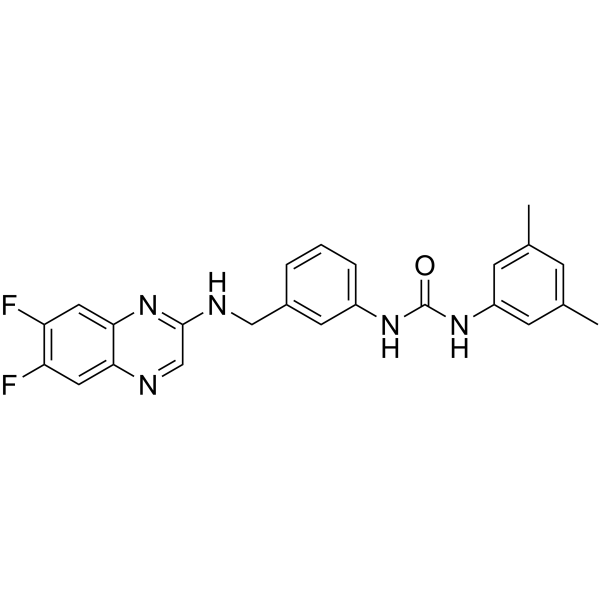| Target |
IC50: 17.2 μM (MGC-803), 12.3 μM (HeLa), 40.6 μM (NCI-H460), 46.8 μM (HepG2), 95.4 μM (SMMC-7721), 8.9 μM (T-24), 86.8 μM (HL-7702)[1]
|
| In Vitro |
Anticancer agent 32 (2.5-40 μM; 48 h) shows cytotoxic activities to cancer cell lines[1]. Anticancer agent 32 (0-16 μM; 24 h) affects cell cycle, induces cell apoptosis, increases intracellular levels of Ca2+ and ROS[1]. Cell Cytotoxicity Assay[1] Cell Line: MGC-803, HeLa, NCI-H460, HepG2, SMMC-7721, T-24 and HL-7702 cell lines Concentration: 2.5, 5, 10, 20 and 40 μM Incubation Time: 48 hours Result: Inhibited cell growth with IC50 values of 17.2, 12.3, 40.6, 46.8, 95.4, 8.9 and 86.8 μM for MGC-803, HeLa, NCI-H460, HepG2, SMMC-7721, T-24 and HL-7702 cells, respectively. Cell Cycle Analysis[1] Cell Line: MGC-803 and T-24 cell lines Concentration: 0, 8 and 12 μM Incubation Time: 24 hours Result: Significantly induced cell cycle arrest at the G2/M phase in T-24 cells. Western Blot Analysis[1] Cell Line: MGC-803 and T-24 cell lines Concentration: 4, 8 and 12 μM Incubation Time: 24 hours Result: Decreased expression level of cyclin B1. Apoptosis Analysis[1] Cell Line: MGC-803 and T-24 cell lines Concentration: 0, 4, 8 and 16 μM Incubation Time: 24 hours Result: Induced cell apoptosis of T-24 cells from 8.21 to 32.91% after treatment by increasing levels of caspase-3 and caspase-9 in T-24 cells.
|
